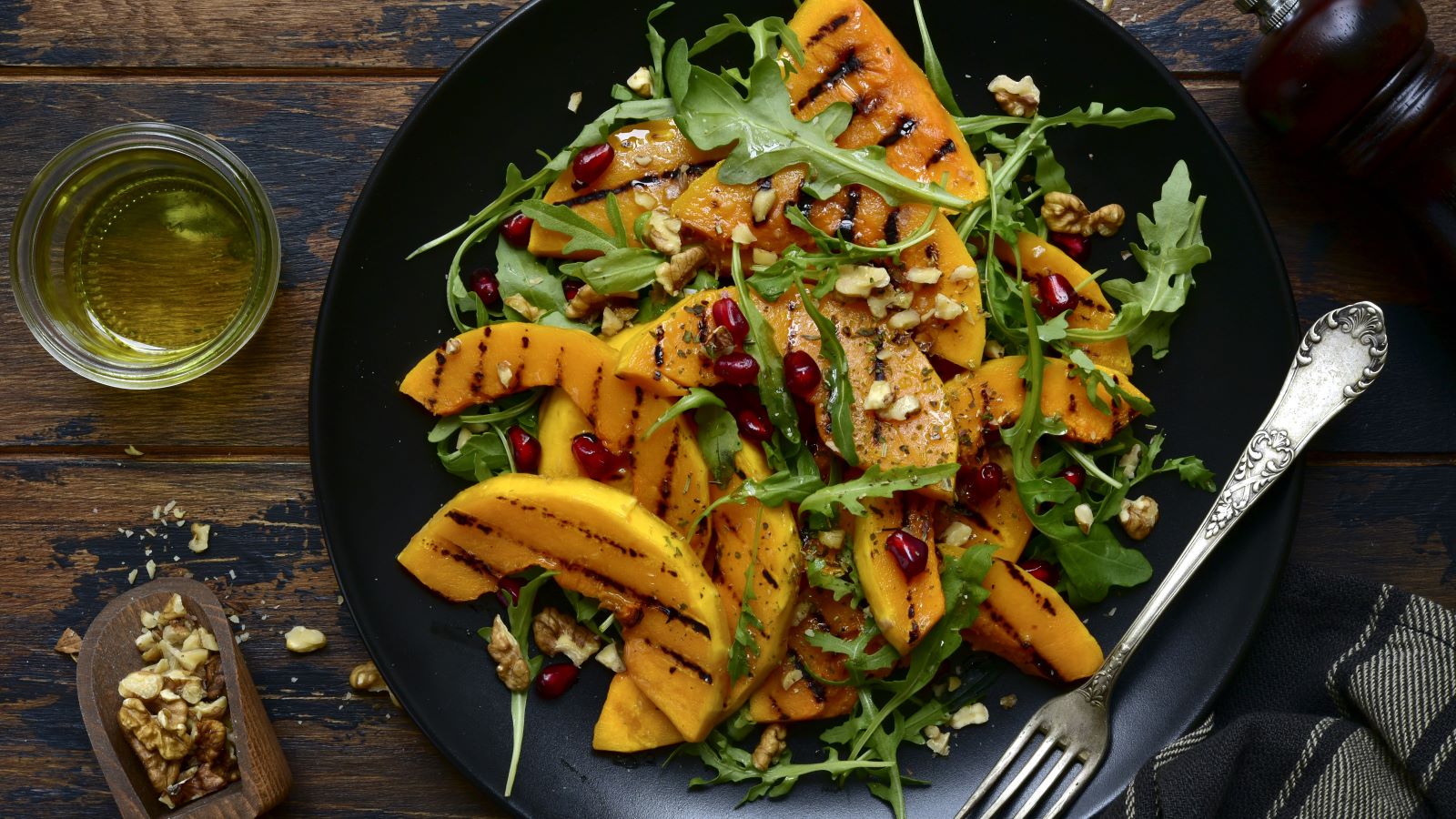Winter holidays are fast approaching, and that means squash season is in full swing.
Wondering how – or why – to incorporate the hearty vegetable into your next meal? We asked an expert.
A healthy starch.
Winter squashes may be starchier than their summer cousins, but don’t let that fool you – they make a wonderful addition to a healthy diet.
“Thanks to their high fiber content, most winter squashes have a low glycemic index,” says Allison Kallberg, RD, an outpatient dietitian at Hartford Hospital. “This means they raise your blood sugar slowly, keep you full and provide sustained energy.”
But the benefits don’t end there – they’re also an excellent source of essential nutrients. Squash is rich in vitamins A and C, as well as disease-fighting antioxidants. And unlike many other holiday treats, squash is heart healthy. Low in saturated fat and high in potassium, they support healthy blood pressure and cholesterol levels.
> Related: 3 Reasons Why Watercress Is the Healthiest Vegetable
Choosing the right one.
With a sweet, mild flavor, winter squashes are a crowd-pleasing choice for family meals.
“Winter squash are a pretty approachable option for people who are learning to enjoy vegetables,” says Kallberg. “You can serve it on its own, or use it to boost the vegetable content of other meals.”
When shopping, Kallberg suggests choosing squash with a firm, matte exterior with no cracks or soft spots. Store squash in a cool, dry location, but do not refrigerate.
> Want more health news? Text StartHere to 85209 to sign up for text alerts
It’s all in the cut.
It may seem tricky to cut, but don’t be intimidated. Kallberg has these tips before you get started:
- Start by cutting the squash in half lengthwise if you plan to roast, puree, or dice it. This will allow you to add it to other dishes, such as mac and cheese, soups, chili, or casseroles.
- If you’re preparing large winter squash, such as acorn or butternut, pierce the skin in several places with a sharp knife, then microwave on high for 3-5 minutes. This will make it softer and easier to cut or peel.
- After cutting it in half, use a grapefruit spoon or an ice cream scoop to scrape out the seeds.
Crafting the perfect side dish.
And the best thing about squash? There’s no shortage of different ways to prepare it.
Kallberg suggests roasting squash with other vegetables such as zucchini, carrots or Brussels sprouts. For a quick dish, simply puree it and serve with butter, salt and pepper. Or, for a fan-favorite at your next event, try baking acorn squash with brown sugar and butter for a sweet and savory side dish.
Diced roasted butternut squash also makes a tasty addition to salad. Serve with kale or arugula, toss with a vinaigrette, and add walnuts or a flavorful cheese for a filling salad.


